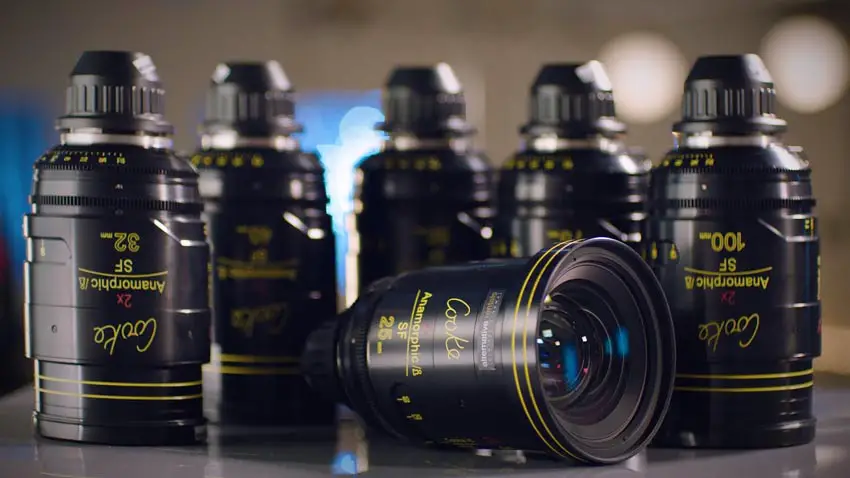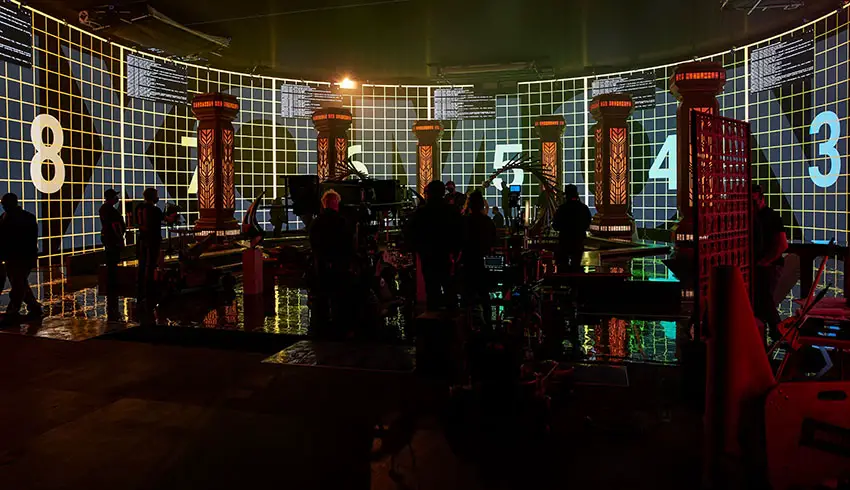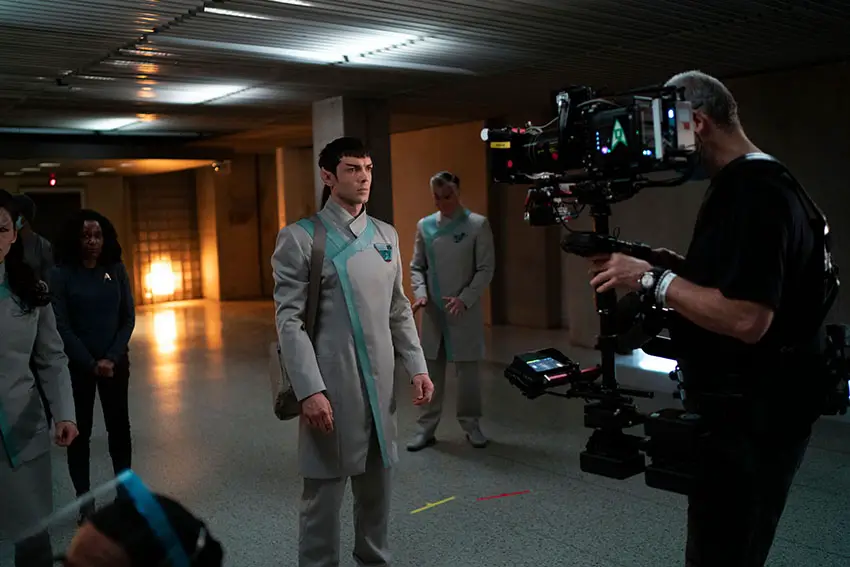To make life on board the starship Enterprise look not only cinematic but more realistic, Star Trek: Strange New Worlds director of photography Glenn Keenan built on the lessons he learned shooting SNWs sister streaming series Discovery by going fully anamorphic. And not only that but opting for Cooke Anamorphic/i Full Frame Plus Special Flare lenses.
Keenan, who spent three seasons on Discovery before making the move to Strange New Worlds, oversaw the transition from conventional cinematic lenses, to the anamorphic primes that offered that widescreen, 2.39:1 big budget look.
And while anamorphic lenses are largely the domain of studio projects, Keenan wanted them for the exact opposite, he wanted an immersive, realistic look that only Cooke’s Special flare lenses could offer.

Image Credit – Cooke
“For Star Trek, there’s a studio, but no reality,” Keenan told Cooke’s blogging team. “I want to convince the audience that we are in a real space with a lens that would add more organic qualities to the image.”
Kennan went on to point out that the Cooke anamorphic lenses have the right amount of aberrations and lens slate to provide that signature JJ Abrams style blue streak that modern Trek has become known for.
Moreover, Kennan added that the inconsistencies between various lenses in the collection, make the surroundings on screen look more realistic, grounding the story and giving the audience the experience of being there. “Both of those features help to deliberately frame the action to where I want the audience to focus on.”

Image Credit: Cooke
The key difference that separates Discovery (or Disco as it is referred to by the crew), is that it is shot in 1080p, while Strange New Worlds is captured in 4K. With the higher resolution and a larger-than-life look that Keenan wanted, he turned to Cooke who custom built a set of cine primes just for the show.
The lenses used for Strange New Worlds are 32mm, 40mm, 50mm, 75mm, 85mm MACRO, 100mm, and 135mm, while the show is shot on three ARRI ALEXA LF and four ARRI ALEXA Mini LF cameras.
Most of the work, Keenan admits, is captured with the 40mm, and the 75mm for Steadicam motion shots. However, for extreme closeups to convey just the right tone, he turns to the 85mm MACRO.

Image Credit: Cooke
“It became our favorite close-up lens as it’s just lovely with great falloff,” the cinematographer says. But while Keenan has a virtual arsenal of filmmaking technology at his fingertips, he is careful not to use anything just because he can.
In fact, the production is very mindful of the legacy of the original Star Trek from 1965, and tries to convey the exact same modest budget style.

Image Credit – Paramount/Cooke
But there’s one piece of tech that Keenan is particularly thankful for, and that’s the metadata transmission support from Cooke’s iTechnology.
“I always have the data…always pulling that data for post. I knew everything about that camera and could police it. I don’t think I could do a show without it…I’m addicted to it.”
Season 1 of Star Trek: Strange New Worlds is currently streaming on the Paramount+ streaming service, with a second season production already underway.
[source: Cooke Optics]
Disclaimer: As an Amazon Associate partner and participant in B&H and Adorama Affiliate programmes, we earn a small comission from each purchase made through the affiliate links listed above at no additional cost to you.

